#nga museum
Explore tagged Tumblr posts
Text

morrison and paul fletcher I am in your walls
#auspol#the nga is pulling art off the walls because of mould#there are leaks throughout the building#trove will go offline if the nla does not get additional funding#the naa had to BEG for funding to preserve speeches by john curtin (you know the guy who led us through ww2?) and did not get enough#but hey!! the awm gets to build a whole new wing and buy a bunch of helicopters!!!#museum stuff
152 notes
·
View notes
Text

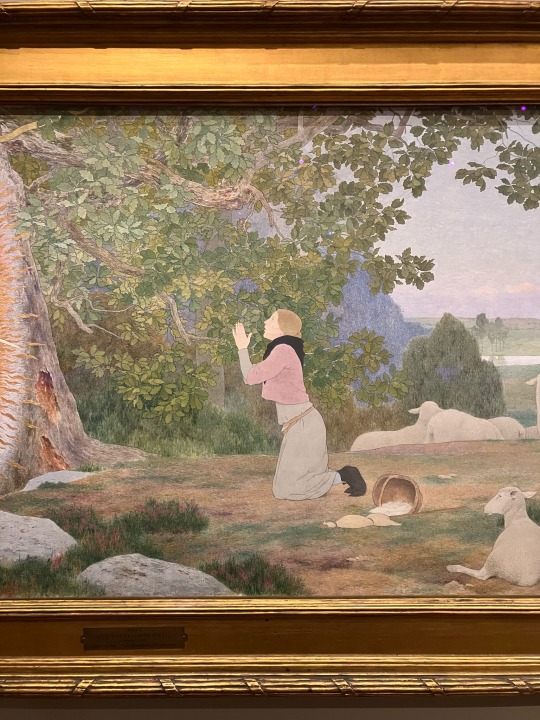

The Vision and Inspiration (Joan of Arc series: I), c. 1907-early 1909 by Louis-Maurice Boutet de Monvel, from the National Gallery of Art
#art#art history#jeanne d'arc#joan of arc#museums#oil painting#oil paintings#corcoran#orleans#france#french artists#french art#history#national gallery#national gallery of art#nga#museum#gold leaf#oil#me culturally appropriating catholicism because it’s sexy
50 notes
·
View notes
Text

A graceful four-armed deity just under 35cm high. Over 1,300 years since its creation, the copper alloy has begun to oxidise, coating the artefact in an emerald green patina.
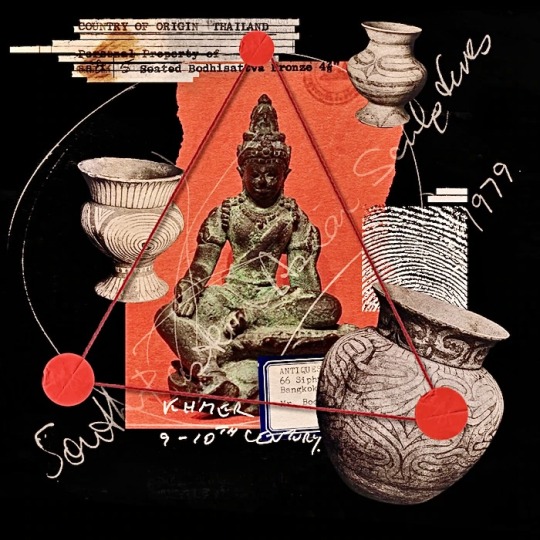
Stolen treasure traders
ABC Radio National - Background Briefing program
ABC News

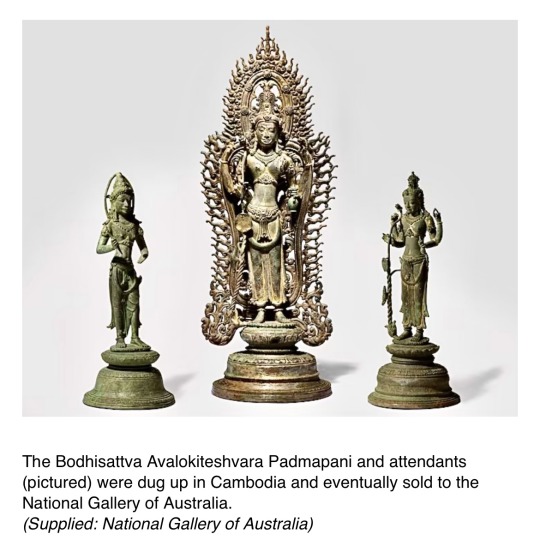

How statues looted from a Cambodian field wound up in the National Gallery of Australia.
ABC TV - Foreign Correspondent program
ABC News - 3 August 2023
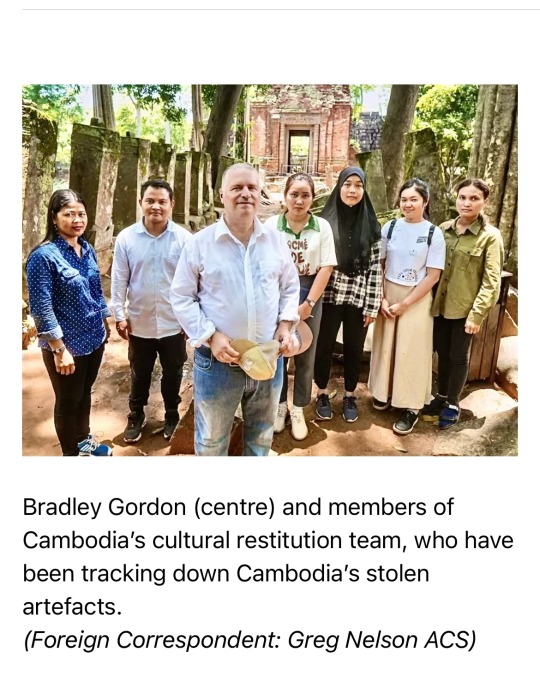
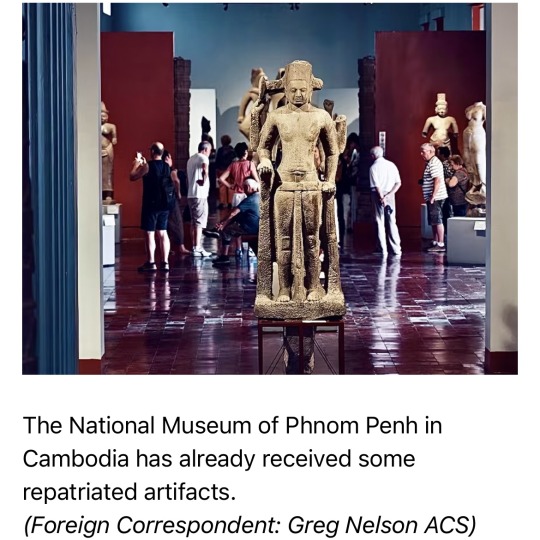
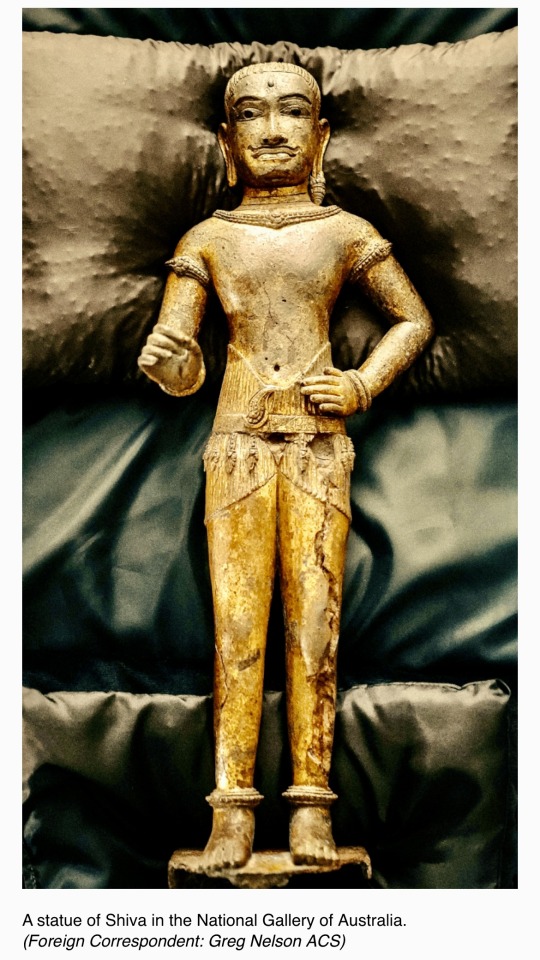
Over 100 'stolen' Cambodian artefacts sitting in prestigious Australian museums, experts say.
ABC TV Foreign Correspondent program
ABC News - 4 August 2023
#ABC TV Foreign Correspondent - ‘Treasure Hunters’#Cambodia’s famous temples looted#‘Blood antiquities’#National Gallery of Australia (NGA)#NGA return Buddhist antiquities to Cambodia#Heritage protection#ABC RN Background Briefing program#Looted Khmer antiquities in Australia#Stolen Cambodian treasures in Australia#Bradley Gordon#The Museum of Phnom Penh#Cambodia’s cultural restitution team
1 note
·
View note
Text
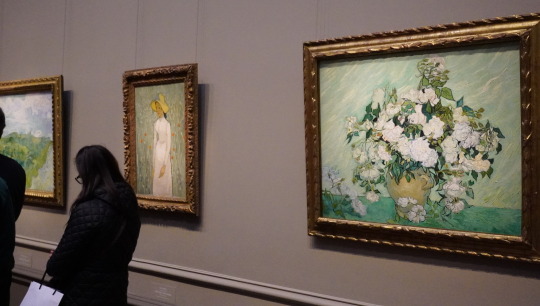
#van gogh#nga#national gallery of art#washington dc#dc#museums#art museums#vincent#paintings#oil painting
0 notes
Text
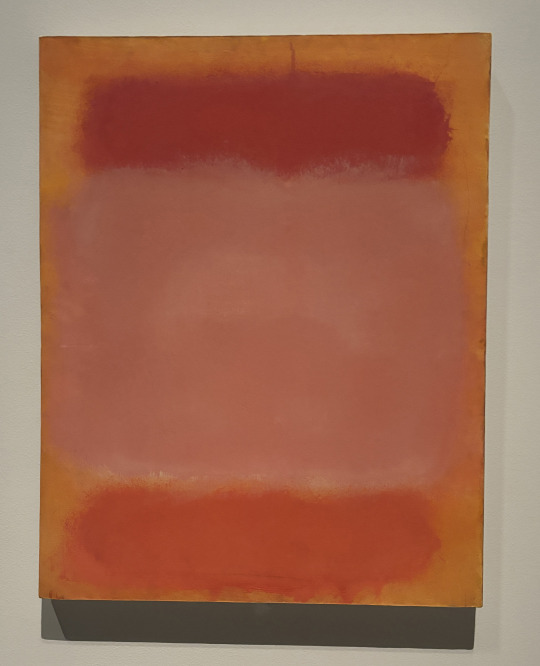
Mark Rothko, Untitled, 1958
Oil on watercolor paper mounted on hardboard
private collection.
© 2023 Kate Rothko Prizel & Christopher Rothko, Artists Rights Society (ARS), New York
Oslo! The Mark Rothko: Paintings On Paper is now open at the National Museum, Oslo.
This exhibition marks the first major presentation of the work of Mark Rothko in the Nordic countries. The Washington DC presentation of this exhibit was revelatory experience, and I highly recommend it.
Shots from the show so far present a slightly more subdued countenance than the ones we saw from NGA in dc. Rothko paintings play so many tricks with light, it's great to see them in different installations as even some of his bright palette can turn stormy.
If you've been to the show and have pictures, I'd love to see them.
#1958#mark rothko#markrothko#rothko#daily rothko#dailyrothko#abstract expressionism#modern art#abstraction#colorfield#ab ex#colorfield painting#mid century
285 notes
·
View notes
Photo
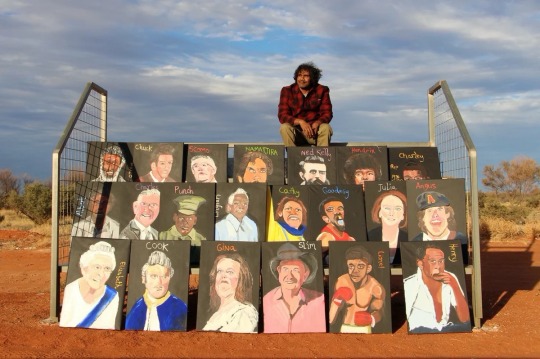
Billionaire Demands Portrait's Removal from Australia National Gallery
Gina Rinehart, the richest person in Australia, has reportedly called on Canberra’s National Gallery of Australia to take down a painting of her by Aboriginal artist Vincent Namatjira.
It wasn’t immediately clear what had moved Rinehart, a donor to the National Gallery of Australia, to make the request, but it was clear, at least, that Namatjira’s portrait was viewed as being not the kindest representation of her. Both the Guardian and the Sydney Morning Herald used the word “unflattering” to describe the picture, which renders her skin a pinkish color, exaggerates the folds on her chin, and turns her lips downward into a frown.
The painting is one of nearly two dozen portraits that appears in Namatjira’s current retrospective at the museum, which traveled the show from the Art Gallery of South Australia in Adelaide.
In Australia, Namatjira is well-known and much-loved. He became the first Indigenous artist to win the Archibald Prize, a prestigious Australian award for portraiture, in 2020.
Rinehart earned her fortune in the mining business and is currently chairwoman of Hancock Prospecting. She has periodically made national headlines in Australia for a string of controversies, most notably her decision in 2022 to stop funding a netball team after an Indigenous player asked not to have the Hancock Prospecting logo featured on her uniform.
According to the Sydney Morning Herald, in April, Rinehart personally asked NGA director Nick Mitzevich and NGA chair Ryan Stokes to deinstall the Namatjira portrait. The museum declined to do so. “The National Gallery welcomes the public having a dialogue on our collection and displays,” the museum said in a statement to the publication. ...

Her portrait is in the bottom row, 3rd from the L
#Vincent Namatjira#Arts#Native Art#Native Australians#Genius#godly#love#quality#HA HA!#EAT THE RICH#but marinate well#and keep antacid handy
18 notes
·
View notes
Text
SLDF Naval Assets, as of Operation TOUCHDOWN, 2153
SLS McKenna's Pride, McKenna-class battleship, SLDF Flagship (Commanding General's Squadron)
SLS Zughoffer Weir, McKenna-class battleship
SLS Bismarck, Texas-class battleship
SLS Ukraine, Texas-class battleship
SLS Chieftain, Liberation (Stefan Amaris)-class battleship (reactivated from museum ship status)
SLS Galactica, Dreadnought-class Battleship (reactivated from museum ship status; extensive refit)
SLS Quicksilver Mongoose, Du Shi Wang-class battleship (recovered from Clan Homeworlds mothball fleet during Operation PICKPOCKET)
SLS Great Coyote Spirit, Nightlord-class battleship (recovered from Clan Homeworlds mothball fleet during Operation PICKPOCKET)
SLS Warspite, Nightlord-class battleship
SLS Barham, Monsoon-class battleship (recovered from Clan Homeworlds mothball fleet during Operation PICKPOCKET)
SLS Kumamoto, Monsoon-class battleship (recovered from Clan Homeworlds mothball fleet during Operation PICKPOCKET)
SLS Shizuoka, Monsoon-class battleship (recovered from Clan Homeworlds mothball fleet during Operation PICKPOCKET)
SLS Enterprise, Enterprise-class supercarrier
SLS Seoul, Samarkand-class carrier (recovered from Clan Homeworlds mothball fleet during Operation PICKPOCKET)
SLS Beijing, Samarkand-class carrier (recovered from Clan Homeworlds mothball fleet during Operation PICKPOCKET)
SLS Corinth, Thera-class carrier
SLS Blood Drinker, Black Lion-class battlecruiser
SLS Arctic Wolf, Black Lion-class battlecruiser
SLS Dark Wolf, Black Lion-class battlecruiser
SLS Jade Aerie, Black Lion-class battlecruiser
SLS White Aerie, Black Lion-class battlecruiser
SLS Streaking Mist, Black Lion-class battlecruiser
SLS Emerald Talon II, Black Lion-class battlecruiser
SLS Tripitz, Black Lion-class battlecruiser (hulk recovered from New Vandenburg system in return for concessions to Taurian Concordat; repaired and refitted)
SLS Bloody Fang, Cameron-class battlecruiser
SLS Turkina's Pride, Cameron-class battlecruiser
SLS Invincible, Tharkad-class battlecruiser
SLS Blue Talon, Aegis-class heavy cruiser
SLS Jade Talon, Aegis-class heavy cruiser
SLS Red Talon, Aegis-class heavy cruiser
SLS Gold Talon, Aegis-class heavy cruiser
SLS Chaos Sailor, Aegis-class heavy cruiser
SLS White Terror, Aegis-class heavy cruiser
SLS Auspicium, Aegis-class heavy cruiser
SLS Manassas, Aegis-class heavy cruiser (experimental refit)
SLS Talismantia, Sovetskii Soyuz-class heavy cruiser (leased from Clan Sea Fox)
SLS Dire Wolf, Sovetskii Soyuz-class heavy cruiser
SLS Accalia, Sovetskii Soyuz-class heavy cruiser
SLS Ciaravella, Sovetskii Soyuz-class heavy cruiser
SLS Soyal, Soyal-class heavy cruiser
SLS Victoria Ward, Liberator-class light cruiser
SLS Jerome Winson, Liberator-class light cruiser
SLS Surprise, Kimagure Surprise-class pursuit cruiser
SLS Admiral Russell Nga, Kimagure-class pursuit cruiser (recovered from Clan Homeworlds mothball fleet during Operation PICKPOCKET)
SLS Vision of Truth, Potemkin-class troop cruiser
SLS Renown, Potemkin-class troop cruiser
SLS Abyssal, Potemkin-class troop cruiser (leased from Clan Sea Fox)
SLS Bonaventure, Potemkin-class troop cruiser (leased from Raven Alliance)
SLS Eden Rose, Potemkin-class troop cruiser (leased from Raven Alliance)
SLS Okami, Lola III-class destroyer
SLS Caleuche, Lola III-class destroyer (leased from Clan Sea Fox)
SLS Ranger, Lola III-class destroyer
SLS Emerald Tornado, Whirlwind-class destroyer
SLS Jade Tornado, Whirlwind-class destroyer
SLS Sabre Cat, Essex-class destroyer
SLS The Iowa, Essex-class destroyer
SLS Abundantia, Essex-class destroyer
SLS Deathblow, Essex-class destroyer
SLS Manchester, Suffren-class destroyer
SLS Queen Lynx, York-class destroyer
SLS Brimstone, York-class destroyer (recovered from Clan Homeworlds mothball fleet during Operation PICKPOCKET)
SLS Exodus Avenger, York-class destroyer (recovered from Clan Homeworlds mothball fleet during Operation PICKPOCKET)
SLS Exodus Crusader, York-class destroyer (recovered from Clan Homeworlds mothball fleet during Operation PICKPOCKET)
SLS Exodus Sentinel, York-class destroyer (recovered from Clan Homeworlds mothball fleet during Operation PICKPOCKET)
SLS Nebulous, York-class destroyer (recovered from Clan Homeworlds mothball fleet during Operation PICKPOCKET)
SLS The Protector, York-class destroyer (recovered from Clan Homeworlds mothball fleet during Operation PICKPOCKET)
SLS Rogue, Congress-class frigate
SLS Fire Crest, Congress-class frigate
SLS Kerensky's Pride, Congress-class frigate
SLS Silver Merlin, Peregrine-class corvette
SLS Green Kestrel, Peregrine-class corvette
SLS Killing Blow, Vincent Mk42-class corvette
SLS Arm's Reach, Vincent Mk42-class corvette
SLS Simas Osis, Vincent Mk42-class corvette
SLS Liberator, Volga-class transport (leased from Clan Sea Fox)
SLS Megalodon, Volga-class transport (leased from Clan Sea Fox)
SLS Matahourua, Carrack-class transport (leased from Clan Sea Fox)
SLS Tethys, Carrack-class transport (leased from Clan Sea Fox)
SLS Far Star, Carrack-class transport
SLS Enlightened Path, Carrack-class transport
SLS Nebula, Carrack-class transport
SLS Glory Road, Carrack-class transport
SLS Blessed Vision, Carrack-class transport
SLS Pathfinder, Carrack-class transport
SLS Guiding Vision, Carrack-class transport
SLS Bright Star, Carrack-class transport
SLS Faithful Rite, Carrack-class transport
SLS Dover, Faslane-class yardship
SLS Necessitas, Faslane-class yardship
SLS Harmonia, Faslane-class yardship
SLS Glamorgan, Faslane-class yardship
SLS Clementia, Newgrange-class Yardship
14 notes
·
View notes
Text

I woke up very early this morning, around 3:47 am, and instinctively grabbed my phone to check the time. While I'm not usually a Facebook app user, the numerous notifications piqued my curiosity, so I opened it. The first thing I saw was this question, which made me laugh out loud and completely derail my coffee-making routine! Naalala ko lng kasi ❌ ko rito hahha sobrang higpit.
Freedom and independence are my 🌬️oxygen. Clingy or possessive people suffocate me. I crave open-mindedness and progressive thinking – anyone stuck in their ways is a turn-off. Di kasi ako matalino 🫠 kaya bet ko yung tinuturoan ako. Charot! Hahaha maka hanap nga ng teacher jan. Joke!
Let's challenge each other's ideas! I readily admit I'm always learning, and someone who shares that curiosity is a must. Shallowness is a bore, so bring on the depth and substance!Tanda ko dati, may niyaya rin ako mag museum, sagot ba naman niya sa’kin “ Dito nalang tayo sa sala, nood ng TV!” 😫🤣😭
Good looks are a plus, but materialistic people with inflated egos need not apply. Inner beauty and a positive attitude are far more attractive to me. Chos!
#LifeLongLearner#PositiveVibes#DepthfulConversationsCaptivator#IndependentSpirit#IntellectuallyCuriousSoul
9 notes
·
View notes
Text
Takeover Phuket with Tay Tawan locations IRL
*Officially, each video is titled Takeover (place name) with Tay Tawan, but to make it easier, I've changed the tag to Thailand

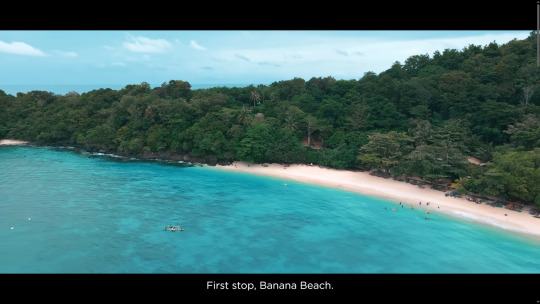



IRL: Banana Beach, Koh He, Rawai, Mueang Phuket District, Phuket 83100, Thailand

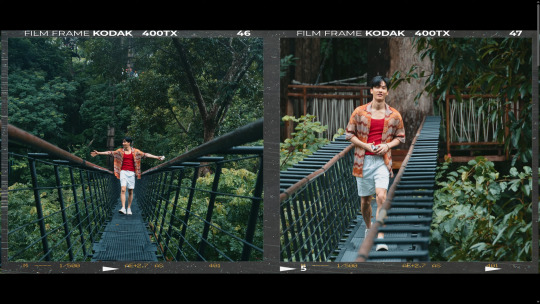

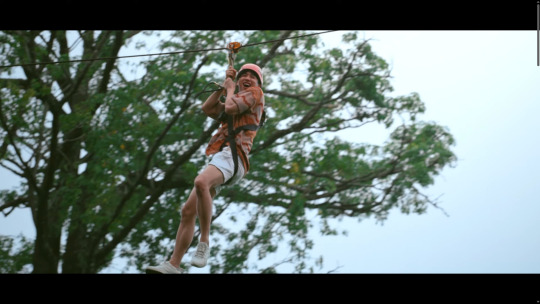
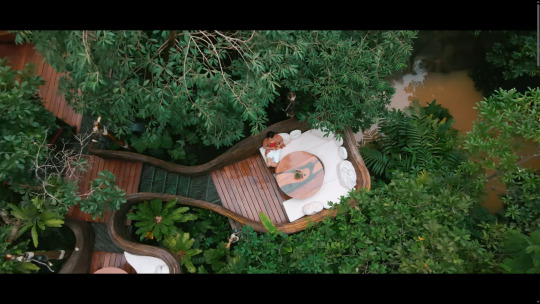
IRL: Hanuman World, 105 หมู่4 ถนนเหมืองเจ้าฟ้า ตำบล วิชิต Wichit, Mueang Phuket District, Phuket 83000, Thailand




IRL: Carnival Magic, 999 Kamala, Kathu District, Phuket 83150, Thailand


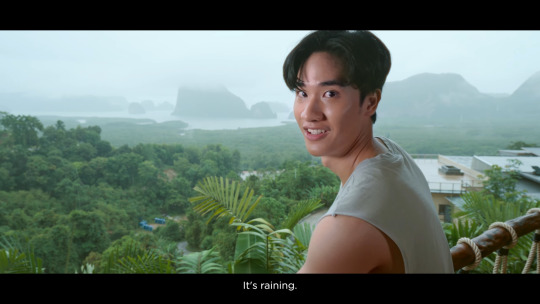
IRL: Sametnangshe Boutique, 90 หมู่ 2 Khlong Khian, Amphoe Takua Thung, Phang-nga 82130, Thailand
+ BONUS

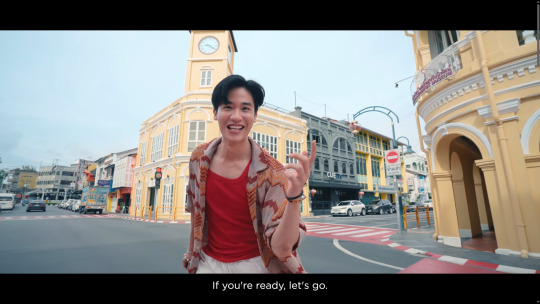
IRL: Phuket Baba Museum, Phangnga Rd, Tambon Talat Yai, Mueang Phuket District, Phuket 83000, Thailand

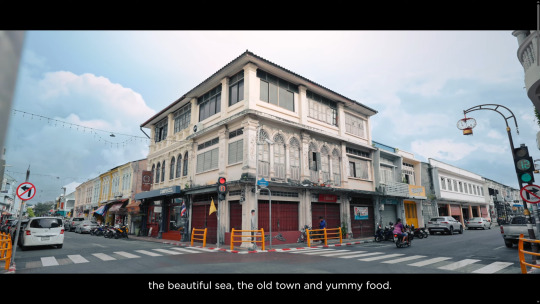

IRL: Old Phuket Town, Mueang Phuket District, Phuket 83000, Thailand
16 notes
·
View notes
Text






- Quick Binondo trip with office besties. Na kamuntikan pa kami mag away away.
- Wai Ying, hindi kana masarap. 🥲
- Ang sarap ng egg tart!! (sabi sa tiktok) Kasi nga nagkakainisan na kami sa sobrang init kaya ayan napicturan nalang yung labas. Next time eto agad bibilhin ko.
- Nat Museum, first time ko dito kaya nawala inis ko sa mga kasama ko.
- La Cathedral Cafe, (Masarap daw sabi sa tiktok) 10/10 daw yung truffle. Walangya di ko malasahan eh. Tapos yung coffee nila. Ang labnaw!! Sayang pila namin ng 1hr. Nakaka lungkot. Maganda yung place pero yung food nope.
19 notes
·
View notes
Text








“Not all stories etched with ink and blood were on paper. I just think he gets to keep something.”
Physical Appearance (Tattoos) Headcanons for HWS Philippines
CW: war, violence, mentions of sex
(I'm sorry that sounds like clickbait... it's on the topic of feats that merit a tattoo).
UPDATE (03/09/23): Minor revisions to PH script tattoos
☼ ☼ ☼
Age of Eligibility for First Tattooing
Manobo: 10-12 years (pre-puberty) Kalinga: 15-20 years (“coming of age”) Visayan: ~20s (adulthood)
Order of Significance
Manobo: N/A; forearms, back, & chest for men (Only women could tattoo their abdomen and calves as well; interestingly among the 3 styles, tattooing on men's abdomens was sparse, if not left completely blank) Kalinga: Wrist —> Back of hand —> Arms —> Chest (+option: sides of torso/legs) —> Back —> Face Visayan: Ankles -> Legs -> Waist -> Chest -> Back -> Face
My idea of tattooing order for Piri would be as such:
Arms, from the wrist (Manobo)
Legs, from the ankles (Visayan)
Chest (Kalinga)
Back (Kalinga)
By tradition, the tattooist decided on the motif, but recipients could also pitch ideas. Piri's script tattoos were his suggestions.
A fully-tattooed arm would take 1 day to complete, while a Kalinga chest whatok was worth 3 days. The tattoo session could even be halted midway, and either the client expressed to resume on another day or simply ended the process altogether. Men would sometimes deliberately hold back on getting tattooed, but this was not without a buildup of peer pressure over time.
Piri got his forearm pangotoeb while young (for a personification) because he wanted to be like the cool, older folks. Poor baby boy would fail to immediately realize how much the process hurt, and he would frequently make up excuses to delay his sessions.
By the time Piri got his leg tattoos, he would gradually fill them up alongside his upper arms, depending on whether he was wandering around the Visayas region or at the Pantaron mountain range down in Mindanao. For sure, Piri received his Kalinga whiing (chest) and dakag* (back) after those parts had been inked.
Notice how I gave him tattoos from Luzon (Kalinga), Visayas, and Mindanao (Manobo)? Hehe.
What constituted getting a tattoo was not exclusive to warfare achievements or headhunting boons. Anything could be a reason for getting a tattoo, as long as the community itself acknowledged it as valid merit.
What exactly did Piri achieve to earn his tattoos? He changes the story every time you ask him.
Was his butt also inked? Yes. I won't show it for fear of unwittingly getting the boot from this platform.
☼ ☼ ☼
Buhid, Tagbanwa, and Kulitan never had a virama (the sign for canceling the inherent vowel). There had been attempts to introduce it in the latter two scripts, but it was never successfully mainstreamed. In writing syllables with canceled vowels, one must retain the original syllable in Tagbanwa and Kulit while you no longer had to write the syllable itself in Buhid. Viramas for Baybayin and Hanunó’o were introduced after the precolonial era, neither of the attempts accomplished by native Filipinos.
In taking these scriptwriting nuances into account, one should enunciate the script as it was being read to discern the word being referred to. Even though it was written as “wa-nga-ya”, a Buhid native would naturally understand it to be read as “way ngayan.” Although anyone could attempt to write in any language with these scripts, I wanted to stick to the intended native tongues to showcase how to properly interpret them.
After doing a guided tour in the National Museum of Anthropology, I opted out of using the "modernized" writing systems in exchange for the "historically utilized" method of not including viramas or writing out a character altogether to eliminate the vowel.
☼ ☼ ☼
TRANSLATIONS
Baybayin: Sumpa Kita (Tagalog) - “I Swear”
Depending on the tone, you could be proclaiming a promise or a curse. I love it. It was also the phrase that the name of the Philippine national flower, (sampaguita) originated from, which was also one of Indonesia's national flowers (melati putih). IndoPhil fans, start taking notes.
Kulitan: Tadtad (Kapampangan) - “To cut to small pieces (minced, diced, pinked, etc.)”
There was a saying: "Tadtaran decoman, ing catadtad a mitalandang, iyang maquiasaua queya." It could be roughly translated as: "They me cut me into a million pieces, but even one of those pieces is still good enough to marry 'the one.'" Morbid but romantic, and reflective of Piri’s love for Indo (he’d be that cheesy, okay?)
Tagbanwa: “Tablay” - “To cross hills and mountains”
It was a 4-verse song that narrated a variety of topics, ranging from household chores to community gatherings to expeditions to sentiments (positive or negative) for others. Penultimately the tablay served to express “what comes out from the heart.” That was so quintessential Piri.
Hanunó’o: “Harampanan” - “Discussion”
What was interesting was that the same term referred to both the conversations held in settling disputes and the moment of convening between the parents of a couple to consent to their marriage (or not). He might be a social butterfly, but he was constantly under pressure to fulfill the role of an intermediary.
Buhid: “Way Ngayan” - “No name”
I initially drew a different word and decided to change it as it didn’t fit for Piri to carry something he could never wield. Among the highland Tau-Buhid, it was common practice to answer “way ngayan” when outsiders of the community asked for their names. Instead, the outsiders would give a name to the Tau-Buhid being addressed to, and only then can the Tau-Buhid be allowed to speak to them. It’s funny how the Philippines was a name* christened by an outsider.
*The same goes for my headcanon name for precolonial Piri.
☼ ☼ ☼
The first name in the tattoo styles referred to the specific location of residence of the studied ethnolinguistic group. It was not a strict requirement to note it down at all times, but more often than not these groups identified themselves by their location.
Supposedly the Panay-Bukidnon/Suludnon preserved precolonial Visayan tattooing, but the one source I found online described it to be more of a freestyle practice. I was also unable to find images of the tattoos on the people themselves. Nonetheless, there was the Pintados Festival that paid homage to the titular tattooed warriors.
I wanted to point out the visual similarities because tattooists were also traveling practitioners to find clients for their work. It was a possible explanation for why tattooed people (if not the particular tattoo style) were observed across the Visayan islands as well as parts of southern Luzon. In the late 19th century, some Bagobo people shared that they were tattooed by an outsider practitioner. Whang-od herself used to be a traveling tattooist.
This was speculation on my part but I believed it was also possible that tattooists also took inspiration from other styles. Chest tattoos for men in both the Visayan tattoos and Manobo pangotoeb both had radial designs on the areola (which I did not draw for Piri’s chest tattoos simply because they clashed). Who knows, maybe a Manobo tattooist encountered the Visayans and wanted to create their version? I liked to think that the variations in motifs and pattern combinations could double as a tattooist's signature.
I allowed for a few liberties here and there in drawing some tattoo motifs for Piri because, at the end of the day, inspiration could come from anywhere. One could also say the variation lies in how artists created their visual interpretations of the sources of inspiration. Even the Kalinga tattoos made available for tourists are borrowed imagery from other groups! In the past, one Kalinga warrior had an eagle tattoo on his arm that was based on the image on an American coin.
Tattoos were meant to be unique to the individual. Their value on having to be earned was on the basis that they reflected not just the personal histories (if not necessarily achievements) of the wearer, but such histories must also be acknowledged by the community granting them.
That last bit was important because while anyone could pay to be tattooed (and it would still represent something about you), you would be considered a fake. Hiya (shame) was a thorn that penetrated deeper around these parts. Although only the Manobo did not have a stigma for not being tattooed, the social pressures still left a mark on Piri (literally!)
If one relied only on tattoos as a visual cue, one would be unable to distinguish which groups individuals belonged to from a distance. If every one of the most significant leaders were tattooed in the exact same patterns, it would be impossible to recognize who’s who until they formally introduced themselves (which no one would have the time for in the middle of combat!) The Visayans had a set of tattoos that could be used by all, which implied some designs were restricted only among the best of the best.
This was HWS Philippines. If he’s going to be the star, he needed to stand out from the crowd.
It would, however, be awkward for Piri when he spent time with certain other groups that carried a strong contempt for the ones he received his tattoos under. He would not be exempt from the consequences.
☼ ☼ ☼
Now here was one more reason why artists/designers should not be afraid to modify on the tattoo motifs (as long as one familiarized themselves with the foundations they worked with): The Butbut Kalinga believe it was taboo to copy older designs, all the more if the original recipient was deceased. So in letting a character don some Kalinga whatok, think twice about perfectly copying every last detail from reference image/s!
In the present day, tattoos for visiting tourists from Whang-Od had to make a selection from a prepared guide, all of them modified for a general audience v.s. designs exclusive to esteemed warriors of the past. I used the former for Piri’s Kalinga whatok.
This was where I addressed the elephant in the room.
My understanding of cultural appropriation was that the offense is in cherry-picking culturally significant symbols & practices and then using them out of their intended context by transforming them into pieces that fit the aesthetic criteria of the dominant - and often oppressive - group.
Save for that one taboo, I did not find any other explicitly recorded statement from either the Butbut Kalinga or the Pantoron Manobo forbidding outsiders from using their tattoos. (Mind you, this was all via resources I could access online - screw this pandemic!)
There was also the lingering question regarding the cultural preservation of PH tattooing practices. In the case of the Kalinga whatok, considering that we could not simply reintroduce headhunting in the present day for morality reasons, did that not mean the tattoos had essentially lost their cultural context? If that rendered them invaluable objects, would it not be self-defeating to the purpose of cultural preservation to just let the practice die out?
I sincerely believed it was just as patronizing to assume that even indigenous peoples could adapt and re-contextualize their traditions because it did not fit the (outsider) ideal of preserving their [I am knocking on wood here] "pristine, primitive forms."
Sometimes even good intentions/aspirations could still take away the platform from the ones it was built for.
(I know I just sounded like a hypocrite in saying that so I'm beating you all to it and calling myself out on it.)
☼ ☼ ☼
My biggest motivation for manifesting this headcanon at all was because I did not swim with the fanon of amnesiac Piri. 😭💦
I was at odds with what constituted as a collective (national) memory, all the more when not only was the Philippines as the nation we knew today was a far cry from the "nation" (bayan) that existed 1500+ years ago (and that was if you happened to go there, which I do because I also did not swim with chibi Piri by the time Magellan showed his ass up on our shores).
It sucked that we lost much of the perishable writings from that time, but written works were not the only means of cultural/historical preservation. I also disagreed with the implication that only written works counted as a valid archive.
The pen might be mightier than the sword, but efforts to improve literacy skills were a double-edged sword in itself. While it was important to teach people to be better communicators*, measuring intellectual capacity by literacy skills could get problematic. I condemned this assumption because I sincerely did not believe that precolonial Filipinos being unbothered to keep written records was a sign of their “backwardness.” What if they never felt the need to?
Because why bother writing it all down when you could say it out loud instead! We might not have books and written histories, but we got oral histories! Epics, ballads, hymns, riddles, folklores, you name it! People passed down traditions through storytelling, all the more for all the indigenous natives* residing in the nation that resisted imperialistic rule (not just colonial) for centuries! We were a nation of songbirds! And that was why "Piri chronically online on Twitter" was absolutely valid.
Although it was easy to justify the amnesia take because the colonizers massacred so many people, and without the people, you also lost the very guardians of those memories...in my most honest opinion that...registered poorly in my head.
What of the ones who survived? What of the people who lived to tell their tales?
When did we stop listening?
*More often than not, people grew up to be swayed to unwittingly support imperialistic/capitalist/fascist agendas because very subtle propaganda was discreetly inserted into the lesson plans in their formative education. Criticisms on colonial education deserved their own talk for another day.
☼ ☼ ☼
What constituted a memory was the affection, the emotion that came with certain experiences. It was why some memories persisted while others were easily forgotten. It was why even memory recollection (which indicated an active search) might not necessarily be true or not. Memory, both in itself and the processes surrounding it, did not follow a linear & and straightforward path (and that was already without taking the complexity of neurobiology into account).
While the merits for a tattoo were generally prescribed through specific or notable acts, I noticed that majority of them seem to share one common affection: Passion. The feeling of an intense, compelling desire for something (or someone).
Among the Manobo (today), most of them were compelled by aesthetic reasons in getting a tattoo. The desire to maintain an appearance that would equally leave an impression on others.
Headhunting/warfare was just the easily cited method, but the Kalinga appraised any act that denoted an individual’s bravery & valor. Bravery in fighting the frontlines, fueled by the compelling desire to defend one’s homeland.
Violence** born out of vengeance is also a thing, and vengeance was just passion manifesting negatively.
Precolonial Visayans had names for tattoos that marked an individual’s first-time experience in war…or love (sex, I guess). Two polar forces treated as equals. I think of how Aphrodite/Venus was also a goddess of war. A goddess of passion.
Headhunting could also have gendered notions that display the "mutual dependence" in the dichotomy of "male/female bloodshed." In a study of the Huaulu people (Seram, Indonesia*), they had a taboo where the men could not participate in headhunting if their wives were menstruating or giving birth. This reinforced the idea that women as "bleeding humans" were as powerfully influential as men who were "bleeders of humans."
On a similar note, there was a pervasive belief in certain other groups that headhunting blessed communities with fertile lands (alongside fertile women). Blood as life essence. Blood as a source of vitality.
Sometimes passion is comparable to being a force of vitality. The driving force of life and death.
Hades game Achilles was onto something when he wrote that Aphrodite "may be the mightiest of all [the Olympians]."
It got complicated, however, because headhunting and warfare were also a means of state violence**. The precolonial Visayans were engaged in and subjected to slave raids, born out of the need to harvest labor for trade motivations (fuck capitalism, am I right?). If all the battle experience from such activities counts as a merit for tattoos, what did that make of Piri?
I thought of how even blood was shed during the process of tattooing. In a way, Piri’s tattoos also functioned as a reminder of all the blood that was shed for him. A reminder of all the people who died for their passions.
Whether it was a price worth paying or not is a conflict he may never find a resolution for.
*They were comparable to the Buaya (Kalinga) in the shared gendered aspect in headhunting. While this implies a cultural backing to Beyer's Wave Migration Theory, the latter was contested by W.H. Scott. In the cited studies below that concentrated on Kalinga tattooing, there were no further details given regarding any connected symbolisms to headhunting.
**Just so we’re all clear, me conducting frank discussions on the topic of violence DID NOT equate to me condoning violence. Remember that Kalinga tattooing diminished because headhunting was outlawed for its nature as an act of violence.
☼ ☼ ☼
Fortunately, there was always the option to negotiate out of a fight (nail that persuasion check, Piri!!).
This was where tattoos as an indicator of one’s place in a community came into play: the more tattooed an individual, the more highly regarded they were. It was they who act as the primary mediator for any conflicts that arose.
It was a huge burden to bear for an entity that encompassed so many communities when he was not (exactly) a part of any of them. While his tattoos provided an opportunistic signal for Piri to be treated as someone due equal respect, it also made him vulnerable to open contempt. Righteously so when the community in question had been victims of the same state violence that advocated for a united nation.
Even prejudice could exist within the same group of people: between those who were content interacting with “lowlanders”/”outsiders” and those who adamantly remained isolated, with the latter even denying the “Filipino” identity. However, a people’s resistance in identifying as subjects of an oppressive government should not be cause to disregard their (co-)inhabitation of spaces. Mediation became a necessity to maintain harmonious relations.
It was a struggle that remains a constant throughout Piri’s history. Juggling the roles of the mediator between communities and the warrior who defended these communities.
The tattoos served as an eternal reminder of Piri’s passions to uphold all these narratives. A reminder of his purpose to maintain the fine threads between peace and war.
HA! I REALLY CAME BACK FULL CIRCLE TO THE FLAG SYMBOLISM!
☼ ☼ ☼
Speaking of flag symbolism, allow me to end this brainrot essay on a funny note.
Imagine telling HWS Philippines that the sun on his flag was inspired by his ASS TATTS.

☼ ☼ ☼
Sources
Abbacan-Tuguic, Lalin, and Lunes Marnag. “Whatok (Tattooe): The Aesthetic Expression of Traditional Kalinga Beauty.” International Journal of Advanced Research in Management and Social Sciences 5, no. 6 (2016): 725-939. https://garph.co.uk/IJARMSS-vol5-no6.html. Bergaño, Diego. Vocabulary of the Kapampangan language in Spanish and dictionary of the Spanish language in Kapampangan: The English Translation of the Kapampangan-Spanish Dictionary. Translated by Fr. Venancio Q. Samson. Angeles City, Philippines: Holy Angel University Press, 2007. Boxer Codex: A Modern Spanish Transcription and English Translation of 16th-Century Exploration Accounts of East and Southeast Asia and the Pacific. Edited by Isaac Donoso. Translated by Ma. Luisa Garcia, Carlos Quirino, and Mauro García. Quezon City, Philippines: Vibal Foundation, Inc., 2016. Bramhall, Donna. “Exploring Kalinga culture, tattoo artistry, tribal traditions,” Rappler, July 9, 2016. https://www.rappler.com/life-and-style/138427-kalinga-culture-tribal-traditions-tatoos/. Calano, Mark Joseph. “Archiving bodies: Kalinga batek and the im/possibility of an archive.” Thesis Eleven 112, no. 1 (2012): 98-112. https://doi.org/10.1177%2F0725513612450502. Clariza, Ma. Elena. “Sacred Texts and Symbols: An Indigenous Filipino Perspective on Reading.” The International Journal of Information, Diversity, & Inclusion 3, no. 2 (2019): 80-92. https://doi.org/10.33137/ijidi.v3i2.32593. Cultural Center of the Philippines. “Tagbanwa.” Encyclopedia of Philippine Art. Accessed December 6, 2021. https://epa.culturalcenter.gov.ph/1/2/2374/. De Las Peñas, Ma. Louise Antonette N., and Analayn Salvador-Amores. “Enigmatic Geometric Tattoos of the Butbut of Kalinga, Philippines.” The Mathematical Intelligencer 41, no. 1 (2019): 31-38. https://doi.org/10.1007/s00283-018-09864-6. Garlitos, Rhandee. “Great Elder.” Panyaan: Three Tales of the Tagbanua. Accessed Dec 7, 2021. https://www.canvas.ph/catalog/panyaan-three-tales-of-the-tagbanua. Hoskins, Janet. “Introduction: Headhunting as Practice and as Trope.” In Headhunting and the Social Imagination in Southeast Asia, edited by Janet Hoskins, 1-49. Stanford, California: Stanford University Press, 1996. Krutak, Lars. “The Last Kalinga Tattoo Artist of the Philippines.” Lars Krutak: Tattoo Anthropologist (blog). WordPress. May 30, 2013. https://www.larskrutak.com/the-last-kalinga-tattoo-artist-of-the-philippines/. Miyamoto, Masaru. 1988. “The Hanunoo-Mangyan: Society, Religion and Law among a Mountain People of Mindoro Island, Philippines.” Senri Ethnological Studies, vol. 22. Osaka: National Museum of Ethnology. Ocampo, Ambeth R. “Who owns Whang-Od and her tattoos?,” Philippine Daily Inquirer, August 11, 2021. https://opinion.inquirer.net/142977/who-owns-whang-od-and-her-tattoos. —. “Heritage: More heat than light,” Philippine Daily Inquirer, August 13, 2021. https://opinion.inquirer.net/143039/heritage-more-heat-than-light. Pagador, Renan. “The Philippine Scripts.” Baybayin Archives (blog). Blogspot. August 26, 2020. http://rapcom-archives.blogspot.com/2020/08/. Ragragio, Andrea Malaya D., and Myfel D. Paluga. “An Ethnography of Pantaron Manobo Tattooing (Pangotoeb): Towards a Heuristic Schema in Understanding Manobo Indigenous Tattoos.” Southeast Asian Studies 8, no. 2 (2019): 259-294. https://doi.org/10.20495/seas.8.2_259. Rosales, Christian A. “Sorcery, Rights, and Cosmopolitics Among the Tau-Buhid Mangyan in Mts. Iglit-Baco National Park.” Aghamtao 27, no. 1 (2019): 110-159. Salvador-Amores, Analyn “Batek: Tradition Tattoos and Identities in Contemporary Kalinga, North Luzon Philippines.” Humanities Diliman 3, no. 1 (2002): 105-142. https://journals.upd.edu.ph/index.php/humanitiesdiliman/article/view/32. —. “Batok (Traditional Tattoos) in Diaspora: The Reinvention of a Globally Mediated Kalinga Identity.” South East Asia Research 19, no. 2 (2011): 293–318. http://www.jstor.org/stable/23750924.
—. “Burik: Tattoos of the Ibaloy Mummies of Benguet, North Luzon, Philippines.” In Ancient Ink: The Archaeology of Tattooing, edited by Lars Krutak and Aaron Deter-Wolf, 37-55. Seattle: University of Washington Press, 2017. —. “Re-examining Igorot representation: issues of commodification and cultural appropriation.” South East Asia Research 28, no. 4 (2020): 380-396. https://doi.org/10.1080/0967828X.2020.1843369. Scott, William Henry. Barangay: Sixteenth-Century Philippine Culture and Society. Quezon City, Philippines: Ateneo de Manila University Press, 1994. “Visayan Tattoo Design.” Akopito (blog). Weebly. February 18, 2014. http://akopito.weebly.com/blog-naacutekocirc/visayan-tattoo-design.
Final Note
While they were interconnected, the emphasis of my headcanon was on tattoos as (national) memory over tattoos as (national) identity. I know it's paradoxical of me to separate them but it did make you think twice about what built identity. What built character! It's a question I cannot answer through one headcanon or one comic even. ☼ BANAAG ☼ would be my attempt at a personal answer to that question.
#hws philippines#war cw#mentions of sex cw#hcs: physical appearance#cultural features#long post#cultural hetalia#hcs: hws philippines
26 notes
·
View notes
Text
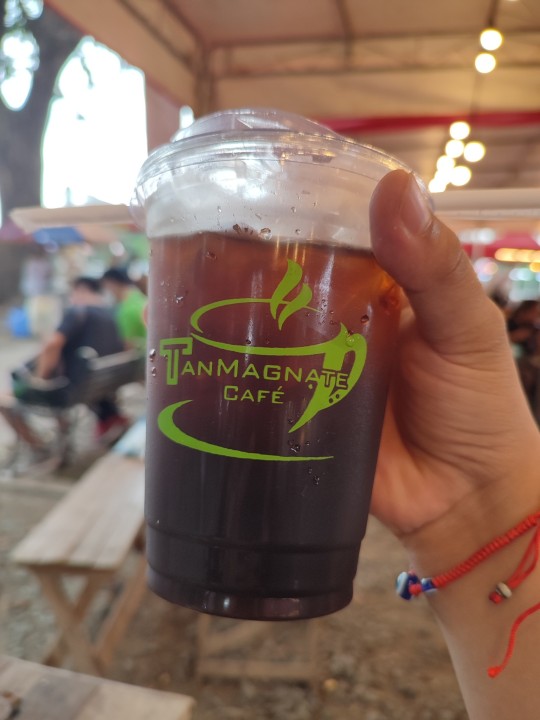

10.03.24 1312H | Luneta
Went to the coffee fair and got myself an iced Americano. Also had pasta and pizza for lunch. Was expecting more stalls but it was still okay.


1446H | National Museum of Natural History, Ermita
Passed by the National Museum after leaving the fair since I'm already in the area and it has been almost 2 years since I last visited (June 2022). Was not able to go to other buildings or take a lot of pics since I'm all alone and though I love museums, medj tinamad ako mag ikot. Haha. Will definitely make time to go here again next time.

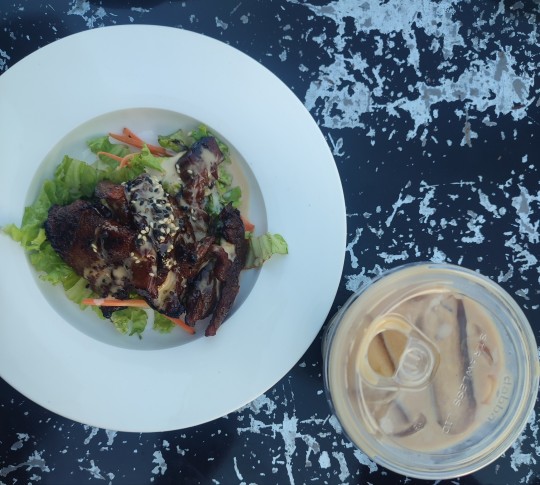

1742H | Cathedral Cafe, Intramuros
Second cup of coffee so I decided not to get another Americano at baka mag reflux na naman ako lol. Got myself cafe latte instead, ordered Korean Barbecue for early dinner and tambay lang until the dark hours.
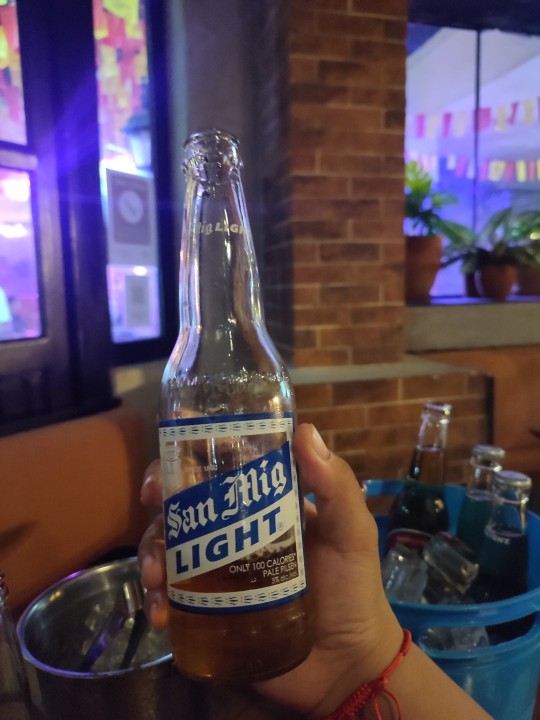
2013H | Fuga Bar and Restaurant, Fort Strip BGC
Finally, on my way home I passed by BGC and decided to grab a little night cap. Then umuwi na ko kasi ang gastos ko today, hindi nga pala ako mayaman hahahahaha.
4 notes
·
View notes
Text
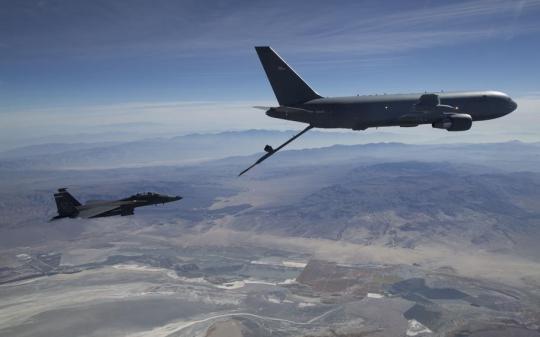
U.S. Air Force marks 100 years of air refueling with national overflight
Fernando Valduga By Fernando Valduga 06/27/23 - 11:00am Military
In honor of a century of excellence in air refueling, the United States Air Force (USAF) is expected to fly over all 50 states on June 27.
The Army Air Service - a predecessor of the Air Force - developed a way in the 1920s to extend flight missions, allowing aircraft, which were strictly propeller-powered, to remain in the air without landing to refuel.
On June 27, 1923, U.S. Army Air Service aviators performed the first air refueling, by passing gasoline through a gravity hose between two DH-4B aircraft. During this historic event, 1º Lieutenant of the Air Service Virgil Hine and 1º Lt. Frank Seifert pumped fuel from one plane, by means of a hose, to the other below, carrying Captain Lowell Smith and 1º Lt. John Richter. A few weeks later, Smith and Richter set a new resistance record of more than 37 hours, which involved more than a dozen refueling contacts, according to the USAF Museum.
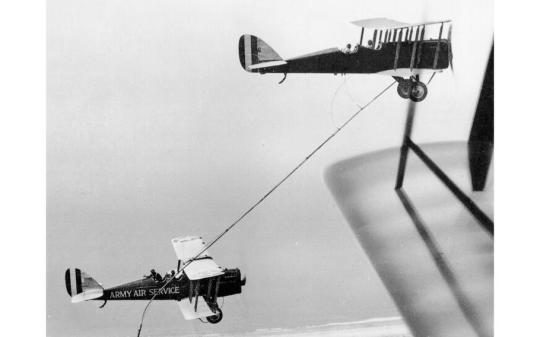
Two Army Air Service pilots pump fuel through a hose from one plane to another in the San Diego sky on June 27, 1923.
Today, more than 150 tanker planes from 26 Total Force facilities are expected to participate with KC-135 Stratotankers, KC-10 Extenders and KC-46 Pegasus aircraft during overflights, celebrating a revolutionary capacity delivered 100 years ago. An Iowa National Air Guard Stratotanker KC-135, for example, will perform F-16 overflights in the Missouri River Valley region — and the 168ª Alaska Wing will fly over many locations with KC-135, including Fort Yukon in the east. central part of the state, Deadhorse in the far north and Kenai at the far south.
"Air refueling embodies our determination to defend freedom and project power, leaving an indelible mark on the history of aviation," said General Mike Minihan, commander of the Air Force Air Mobility Command. "It connects our strategic vision with operational reality, ensuring that we can reach any corner of the globe with unwavering speed."

"It connects our strategic vision with operational reality, ensuring that we can reach any corner of the globe with unwavering speed and accuracy. Air refueling embodies our determination to defend freedom and project power, leaving an indelible mark on the history of aviation," he added.
The announcement earlier this year about the acquisition of the KC-46A and the accelerated search for the state-of-the-art air refueling system (NGAS) is driving the advancement of capacity that was developed and entrusted to aviators a century ago, the USAF declared.
Tags: Military AviationREVO - Air ReplenishmentUSAF - United States Air Force / U.S. Air Force
Sharing
tweet
Fernando Valduga
Fernando Valduga
Aviation photographer and pilot since 1992, has participated in several events and air operations, such as Cruzex, AirVenture, Daytona Airshow and FIDAE. He has works published in specialized aviation magazines in Brazil and abroad. Uses Canon equipment during his photographic work around the world of aviation.
Related news
MILITARY
Canada receives authorization to buy P-8A Poseidon aircraft
27/06/2023 - 20:11
MILITARY
Ireland receives its first Airbus C295 MPA
27/06/2023 - 19:45
MILITARY
European concerns increase with the Russian use of Iranian drones in Ukraine
27/06/2023 - 16:00
HELICOPTERS
Korean Air delivers first fuselage for Boeing AH-6 helicopter program
27/06/2023 - 14:00
KC-390 aircraft during demonstration in Greece. (Photo: Konstantinos Sotiropoulos)
EMBRAER
VIDEO: Embraer KC-390 is demonstrated for the Greek Air Force
27/06/2023 - 12:00
INTERCEPTIONS
VIDEO: Russian fighters intercept UK aircraft over the Black Sea
27/06/2023 - 08:41
homeMain PageEditorialsINFORMATIONeventsCooperateSpecialitiesadvertiseabout
Cavok Brazil - Digital Tchê Web Creation
Commercial
Executive
Helicopters
HISTORY
Military
Brazilian Air Force
Space
Specialities
Cavok Brazil - Digital Tchê Web Creation
10 notes
·
View notes
Text

Mark Rothko, Untitled, 1969
Acrylic on paper, 74-1/8 x 48-1/8 in. (188.3 x 122.3 cm)
© Kate Rothko Prizel and Christopher Rothko_ARS
I took this yesterday at the works on paper show at the NGA. This is a popular painting in the usual form on this blog and here we see it look much darker than we are used to. Some of these bright scans we have had forever I am finding are a bit different than reality, but then you have to take into account preferences of the format these are being displayed in. Catalog scans often go for punchy bright looks that dazzle immediately.
More and more, galleries are now using lower light (such as this) to display Rothko works in the manner he might have intended, which would be the kind of lighting he used when painting them. Lighter scans are not exactly fiction as Rothkos (as i have been over on this blog many times) are extremely sensitive to light, both bright and dark and warm and cool. This means that when you bring the lighting up to a lot of museum's standards, you'd get a lighter look to the photo.
This kind of lighting is good for a lot of types of painting but, for me, when you start seeing these works in lower light, Rothko's original intentions make sense.
#mark rothko#markrothko#rothko#daily rothko#dailyrothko#abstract expressionism#modern art#abstraction#colorfield#ab ex#colorfield painting#mid century#1969
321 notes
·
View notes
Text

lakas maka tambay!
Nakakapagod din mag ikot sa Pinto Art Museum malawak din naman tas tagal ko din tumingin sa mga art piece kasi dinadama ko yung emotion na kung paano sya ginawa, tas basa basa din kung sino ang artist, nakakamangha sobra sa bawat master piece/artwork galing!, tas natutuwa lang din ako kasi naging photographer ako sa mangilan ngilan na mga mag jojowa na hirap sa selfie kaya nag volunteer na ako mag picture sa kanila, tas napagod na nga ako umupo ako saglit tas pinicturan naman ako.
#ganapkahapon
May 21, 2023 06:55 pm
8 notes
·
View notes
Text
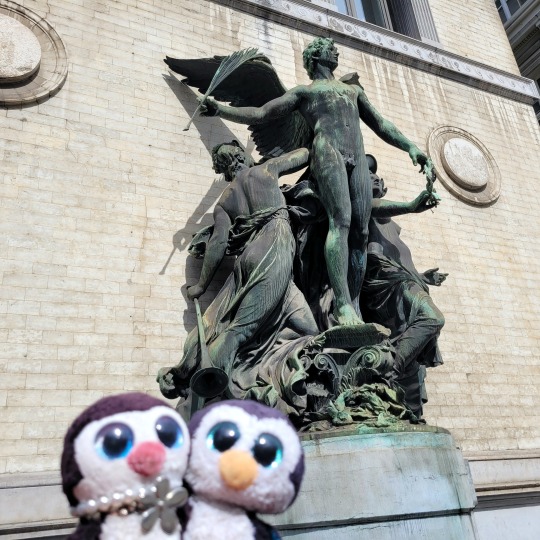
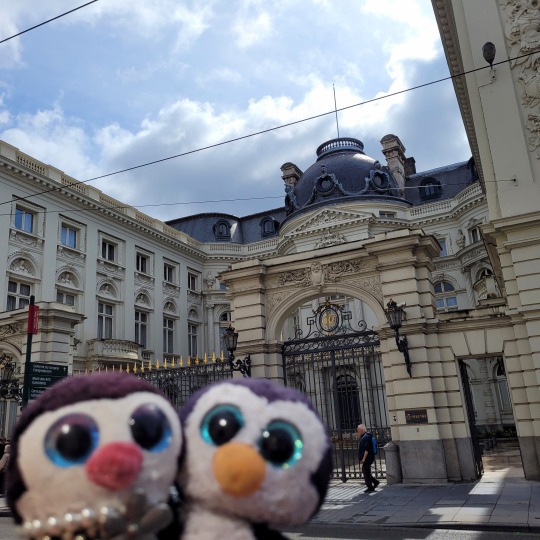
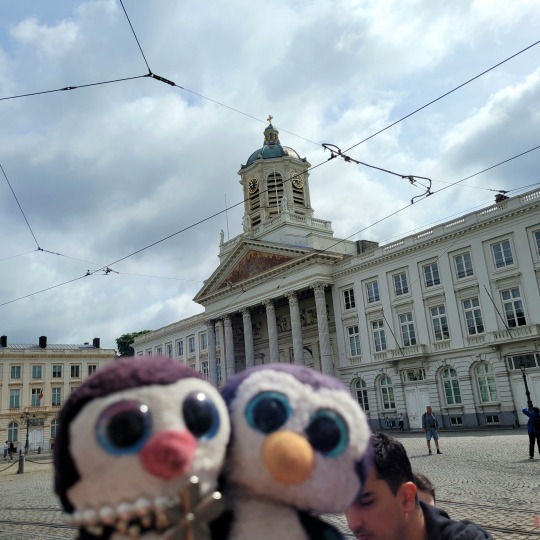

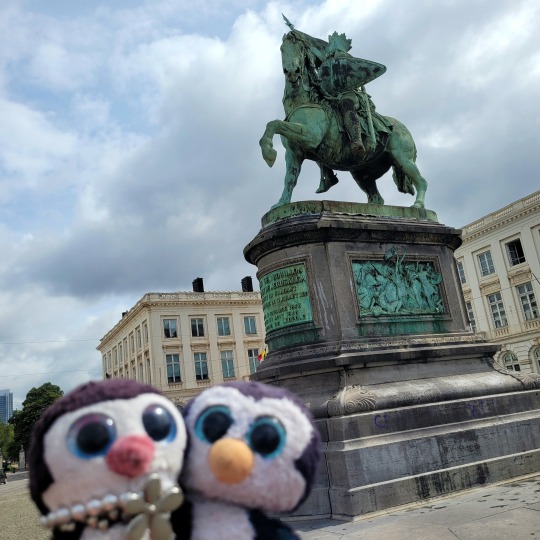
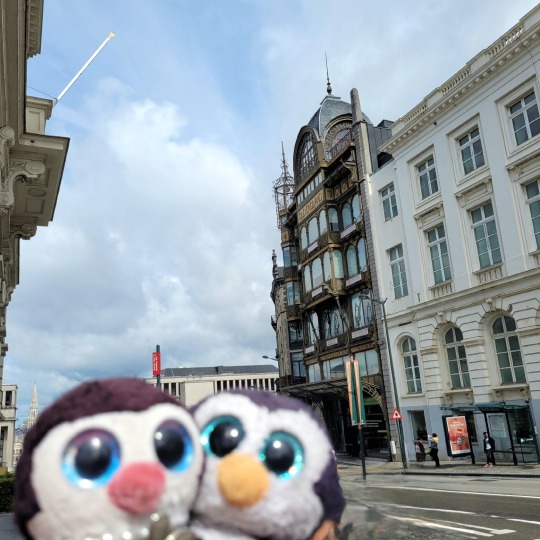
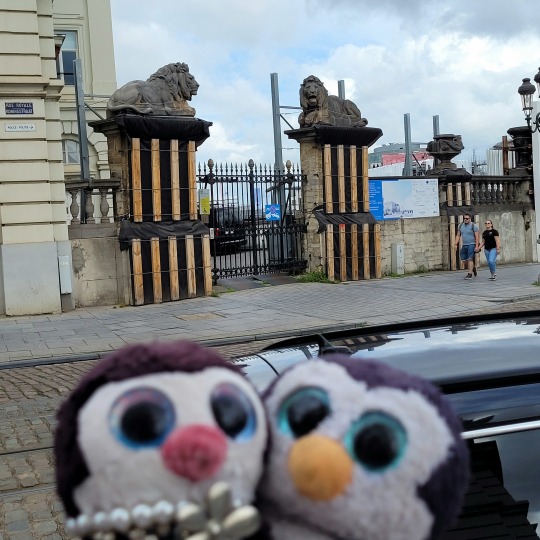

2023/08/04 Volvimos al centro y estuvimos alrededor del palacio real y algunos de los museos más importantes de la ciudad. Vimos a un señor montado a caballo y un niño que estaba tocando un instrumento musical.
We returned to the center and were around the royal palace and some of the most important museums in the city. We saw a man riding a horse and a boy who was playing a musical instrument.
Google Translation into French: Nous sommes retournés au centre et avons visité le palais royal et certains des musées les plus importants de la ville. Nous avons vu un homme à cheval et un garçon qui jouait d'un instrument de musique.
Google translation into Italian: Siamo tornati in centro e abbiamo visitato il palazzo reale e alcuni dei musei più importanti della città. Abbiamo visto un uomo a cavallo e un ragazzo che suonava uno strumento musicale.
Google Translation into Portuguese: Regressámos ao centro e visitámos o palácio real e alguns dos museus mais importantes da cidade. Vimos um homem a cavalo e um menino tocando um instrumento musical.
Google Translation into German: Wir kehrten ins Zentrum zurück und besichtigten den Königspalast und einige der wichtigsten Museen der Stadt. Wir sahen einen Mann auf einem Pferd und einen Jungen, der ein Musikinstrument spielte.
Google Translation into Albanisch: U kthyem në qendër dhe ishim përreth pallatit mbretëror dhe disa nga muzetë më të rëndësishëm të qytetit. Pamë një burrë duke hipur në kalë dhe një djalë që i binte një instrumenti muzikor.
Google Translation into Armenian: Մենք վերադարձանք կենտրոն և եղանք թագավորական պալատի և քաղաքի կարևորագույն թանգարանների շուրջը։ Տեսանք ձի հեծած մի տղամարդու և երաժշտական գործիք նվագող տղայի։
Google Translation into Bulgarian: Върнахме се в центъра и бяхме около кралския дворец и някои от най-важните музеи в града. Видяхме мъж, яздещ кон и момче, което свиреше на музикален инструмент.
Google Translation into Czech: Vrátili jsme se do centra a byli kolem královského paláce a některých nejvýznamnějších muzeí ve městě. Viděli jsme muže na koni a chlapce, který hrál na hudební nástroj.
Google Translation into Croatian: Vratili smo se u centar i razgledali kraljevsku palaču i neke od najvažnijih muzeja u gradu. Vidjeli smo čovjeka koji je jahao konja i dječaka koji je svirao glazbeni instrument.
Google Translation into Danish Vi vendte tilbage til centrum og var omkring kongeslottet og nogle af de vigtigste museer i byen. Vi så en mand ride på en hest og en dreng, der spillede på et musikinstrument.
Google Translation into Slovak: Vrátili sme sa do centra a boli okolo kráľovského paláca a niektorých najvýznamnejších múzeí v meste. Videli sme muža jazdiaceho na koni a chlapca, ktorý hral na hudobnom nástroji.
Google Translation into Slovenian: Vrnili smo se v center in si ogledovali kraljevo palačo in nekaj najpomembnejših muzejev v mestu. Videli smo moškega, ki je jezdil konja, in fanta, ki je igral na glasbilo.
Google Translation into Estonian: Jõudsime tagasi kesklinna ja olime kuningalossi ja linna tähtsamate muuseumide ümbruses. Nägime meest ratsutamas ja poissi, kes mängis pilli.
Google Translation into Suomi: Palasimme keskustaan ja olimme kuninkaallisen palatsin ja joidenkin kaupungin tärkeimpien museoiden ympärillä. Näimme miehen ratsastamassa hevosella ja pojan, joka soitti soitinta.
Google Translation into Georgian: ჩვენ დავბრუნდით ცენტრში და ვიარეთ სამეფო სასახლისა და ქალაქის ზოგიერთი ყველაზე მნიშვნელოვანი მუზეუმის გარშემო. დავინახეთ კაცი ცხენზე ამხედრებული და ბიჭი, რომელიც მუსიკალურ ინსტრუმენტზე უკრავდა.
Google Translation into Greek: Επιστρέψαμε στο κέντρο και βρεθήκαμε γύρω από το βασιλικό παλάτι και μερικά από τα πιο σημαντικά μουσεία της πόλης. Είδαμε έναν άντρα να καβαλάει ένα άλογο και ένα αγόρι που έπαιζε ένα μουσικό όργανο.
Google Translation into Hungarian: Visszatértünk a központba, és körbejártuk a királyi palotát és a város néhány legfontosabb múzeumát. Láttunk egy lovon ülő férfit és egy fiút, aki hangszeren játszott.
Google Translation into Latvian: Mēs atgriezāmies centrā un bijām ap karalisko pili un dažiem svarīgākajiem pilsētas muzejiem. Mēs redzējām vīrieti, kurš jāj uz zirga, un zēnu, kurš spēlē mūzikas instrumentu.
Google Translation into Dutch: We keerden terug naar het centrum en waren rond het koninklijk paleis en enkele van de belangrijkste musea in de stad. We zagen een man op een paard rijden en een jongen die een muziekinstrument bespeelde.
Google Translation into Norwegian: Vi kom tilbake til sentrum og var rundt det kongelige palasset og noen av de viktigste museene i byen. Vi så en mann som kjørte på en hest og en gutt som spilte et musikkinstrument.
Google Translation into Polish: Wróciliśmy do centrum i zwiedziliśmy pałac królewski oraz kilka najważniejszych muzeów w mieście. Widzieliśmy mężczyznę jadącego na koniu i chłopca grającego na instrumencie muzycznym.
Google Translation into Romanian: Ne-am întors în centru și am fost în preajma palatului regal și a unora dintre cele mai importante muzee din oraș. Am văzut un bărbat călare pe un cal și un băiat care cânta la un instrument muzical.
Google Translation into Russian: Мы ве��нулись в центр и осмотрели королевский дворец и некоторые из самых важных музеев города. Мы увидели мужчину верхом на лошади и мальчика, игравшего на музыкальном инструменте.
Google Translation into Serbian: Вратили смо се у центар и били око краљевске палате и неких од најважнијих музеја у граду. Видели смо човека како јаше коња и дечака који је свирао музички инструмент.
Google Translation into Swedish: Vi återvände till centrum och var runt det kungliga palatset och några av de viktigaste museerna i staden. Vi såg en man som red på en häst och en pojke som spelade ett musikinstrument.
Google Translation into Turkish: Merkeze döndük ve kraliyet sarayının ve şehrin en önemli müzelerinden bazılarının çevresinde dolaştık. Ata binen bir adam ve müzik aleti çalan bir çocuk gördük.
Google Translation into Ukrainian: Ми повернулися до центру та були навколо королівського палацу та деяких з найбільш важливих музеїв у місті. Ми побачили чоловіка, який їхав верхи, і хлопчика, який грав на музичному інструменті.
Google Translation into Arabic: عدنا إلى المركز وتجولنا حول القصر الملكي وبعض أهم المتاحف في المدينة. رأينا رجلاً يركب حصاناً وصبياً يعزف على آلة موسيقية.
Google Translation into Bengali: আমরা কেন্দ্রে ফিরে আসি এবং রাজপ্রাসাদ এবং শহরের সবচেয়ে গুরুত্বপূর্ণ যাদুঘরের আশেপাশে ছিলাম। আমরা একজন লোককে ঘোড়ায় চড়তে দেখেছি এবং একটি ছেলে বাদ্যযন্ত্র বাজাচ্ছিল।
Google Translation into Simplified Chinese: 我们回到市中心,参观了皇宫和城里一些最重要的博物馆。 我们看到一个骑马的人和一个正在演奏乐器的男孩。
Google Translation into Korean: 우리는 중심으로 돌아와 왕궁과 도시의 가장 중요한 박물관 주변에 있었습니다. 우리는 말을 타는 남자와 악기를 연주하는 소년을 보았습니다.
Google Translation into Guarani: Rojevy pe centro-pe ha roime pe palacio real jerére ha unos kuánto museo iñimportantevéva pe siudápe. Rohecha peteĩ kuimbaʼe ojupíva kavaju ári ha peteĩ mitãkariaʼy ombopúva peteĩ instruménto de músika.
Google Translation into Hawaiian: Hoʻi mākou i ke kikowaena a puni ka hale aliʻi a me kekahi o nā hale hōʻikeʻike koʻikoʻi o ke kūlanakauhale. Ua ʻike mākou i kekahi kanaka e holo ana i ka lio a me kahi keikikāne e hoʻokani ana i ka mea kani.
Google Translation into Hebrew: חזרנו למרכז והיינו בסביבת ארמון המלוכה וכמה מהמוזיאונים החשובים בעיר. ראינו אדם רוכב על סוס וילד שניגן בכלי נגינה.
Google Translation into Hindi: हम केंद्र में लौट आए और शाही महल और शहर के कुछ सबसे महत्वपूर्ण संग्रहालयों के आसपास थे। हमने एक आदमी को घोड़े पर सवार और एक लड़के को देखा जो एक संगीत वाद्ययंत्र बजा रहा था।
Google Translation into Indonesian: Kami kembali ke pusat kota dan mengelilingi istana kerajaan dan beberapa museum terpenting di kota. Kami melihat seorang pria menunggang kuda dan seorang anak laki-laki sedang memainkan alat musik.
Google Translation into Japanese: 私たちは中心部に戻り、王宮や市内で最も重要な博物館のいくつかを巡りました。 私たちは馬に乗っている男性と楽器を演奏している少年を見ました。
Google Translation into Kyrgyz: Биз борборго кайтып келип, падыша сарайынын жана шаардагы эң маанилүү музейлердин айланасында болдук. Ат минген киши менен музыкалык аспапта ойногон баланы көрдүк.
Google Translation into Malayalam: ഞങ്ങൾ കേന്ദ്രത്തിലേക്ക് മടങ്ങി, രാജകൊട്ടാരവും നഗരത്തിലെ ഏറ്റവും പ്രധാനപ്പെട്ട ചില മ്യൂസിയങ്ങളും ചുറ്റി. കുതിരപ്പുറത്ത് കയറുന്ന ഒരാളെയും സംഗീതോപകരണം വായിക്കുന്ന ഒരു ആൺകുട്ടിയെയും ഞങ്ങൾ കണ്ടു.
Google Translation into Malay: Kami kembali ke pusat dan berada di sekitar istana diraja dan beberapa muzium terpenting di bandar. Kami melihat seorang lelaki menunggang kuda dan seorang budak lelaki sedang bermain alat muzik.
Google Translation into Malagasy: Niverina teo afovoan-tanàna izahay ary nanodidina ny lapan’ny mpanjaka sy ny sasany tamin’ireo tranombakoka lehibe indrindra tao an-tanàna. Nahita lehilahy nitaingina soavaly izahay ary zazalahy iray nitendry zavamaneno.
Google Translation into Mongolian: Бид төвд буцаж ирээд хааны ордон болон хотын хамгийн чухал музейн эргэн тойронд байлаа. Морь унаж яваа хүн, хөгжмийн зэмсэг тоглож байгаа хүү хоёрыг бид харсан.
Google Translation into Nepali: हामी केन्द्रमा फर्कियौं र शाही दरबार र शहरका केही महत्त्वपूर्ण संग्रहालयहरू वरिपरि थियौं। हामीले घोडामा सवार एक जना मानिस र एउटा केटालाई संगीत वाद्य बजाउँदै गरेको देख्यौं।
Google Translation into Panjabi: ਅਸੀਂ ਕੇਂਦਰ ਵਿੱਚ ਵਾਪਸ ਆ ਗਏ ਅਤੇ ਸ਼ਾਹੀ ਮਹਿਲ ਅਤੇ ਸ਼ਹਿਰ ਦੇ ਕੁਝ ਸਭ ਤੋਂ ਮਹੱਤਵਪੂਰਨ ਅਜਾਇਬ ਘਰਾਂ ਦੇ ਆਲੇ ਦੁਆਲੇ ਸੀ. ਅਸੀਂ ਇੱਕ ਆਦਮੀ ਨੂੰ ਘੋੜੇ ਤੇ ਸਵਾਰ ਅਤੇ ਇੱਕ ਲੜਕੇ ਨੂੰ ਦੇਖਿਆ ਜੋ ਇੱਕ ਸਾਜ਼ ਵਜਾ ਰਿਹਾ ਸੀ।
Google Translation into Pashtun: موږ مرکز ته راستون شو او د شاهي ماڼۍ شاوخوا او د ښار ځینې خورا مهم موزیمونه وو. موږ یو سړی ولید چې په آس سپاره وو او یو هلک چې د موسیقۍ آله غږوي.
Google Translation into Persian: ما به مرکز برگشتیم و در اطراف کاخ سلطنتی و برخی از مهم ترین موزه های شهر بودیم. مردی سوار بر اسب و پسری را دیدیم که آلات موسیقی می نواخت.
Google Translation into Sundanese: Urang balik ka pusat jeung éta sabudeureun karaton karajaan jeung sababaraha museum pangpentingna di kota. Urang nempo hiji lalaki nunggang kuda jeung budak lalaki anu maén alat musik.
Google Translation into Tagalog: Bumalik kami sa gitna at nakapaligid sa palasyo ng hari at ilan sa pinakamahalagang museo sa lungsod. May nakita kaming lalaking nakasakay sa kabayo at isang batang lalaki na tumutugtog ng instrumentong pangmusika.
Google Translation into Thai: เรากลับมาที่ใจกลางเมืองและอยู่รอบๆ พระราชวังและพิพิธภัณฑ์ที่สำคัญที่สุดบางแห่งในเมือง เราเห็นชายคนหนึ่งขี่ม้าและเด็กผู้ชายคนหนึ่งกำลังเล่นเครื่องดนตรี
Google Translation into Telugu: మేము మధ్యలోకి ���ిరిగి వచ్చాము మరియు రాజభవనం మరియు నగరంలోని కొన్ని ముఖ్యమైన మ్యూజియంల చుట్టూ తిరిగాము. గుర్రపు స్వారీ చేస్తున్న వ్యక్తిని, సంగీత వాయిద్యం వాయిస్తున్న అబ్బాయిని చూశాం.
Google Translation into Urdu: ہم مرکز میں واپس آئے اور شاہی محل اور شہر کے کچھ اہم عجائب گھروں کے آس پاس تھے۔ ہم نے ایک آدمی کو گھوڑے پر سوار دیکھا اور ایک لڑکا جو موسیقی کا آلہ بجا رہا تھا۔
Google Translation into Uzbek: Biz markazga qaytib, qirol saroyi va shaharning eng muhim muzeylari atrofida bo'ldik. Ot mingan odam va cholg‘u chalayotgan bolakayni ko‘rdik.
Google Translation into Vietnamese: Chúng tôi quay trở lại trung tâm và đi vòng quanh cung điện hoàng gia cũng như một số bảo tàng quan trọng nhất trong thành phố. Chúng tôi nhìn thấy một người đàn ông cưỡi ngựa và một cậu bé đang chơi một nhạc cụ.
#Bruselas#Bruxelles#Brussels#Belgica#Belgium#Downtown#Royal#Palace#Architecture#Sculpture#Modernism#Angel#Flute#PolloNegroSkyWalker#TravelBlogger#Wanderlust#CoupleGoals#GoodVibes#Plushies#instaGood#Maharashtra#ペンギン
5 notes
·
View notes